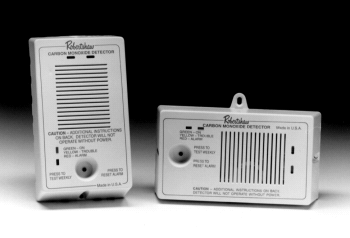A carbon monoxide detector is a device that triggers an alarm if the level of carbon
monoxide in the surrounding air rises above a certain level. Carbon
monoxide is harmful if you are exposed to high levels of it in a short period
of time, or to lower levels over a long period.
Carbon monoxide detectors require a continuous supply of power, so look
for a model that can run off a back-up battery supply if the mains power
is cut off. Also be sure that the detector conforms to at least one of the
major carbon dioxide alarm standards – UL2034 (American), EN50291
(European), or BS7860 (British). Carbon monoxide detectors DO NOT work as
smoke alarms.
Other factors to consider before purchasing:
What are the ages and health of your family members? A detector designed
to protect a healthy adult will not necessarily go off if there's a
threat to a child or someone who is more sensitive to the effects of
the gas.
What is the lifespan of the device? Typically, it will be about 2
years. Note that the test mechanism on some models may check only whether
the alarm is working and not if the detector itself is functioning.
Do you actually need a carbon monoxide detector? If so, how many?
The answers will depend on what sources of this gas (fires, furnaces,
etc) there are in your home and the degree to which the building is
airtight.
Installation and use
Follow the manufacturer's recommendations for placing and installing
the detectors(s) in your home.
Test the detectors according to the manufacturer's guidelines, typically
at least once a month.
Replace detectors and batteries as recommended by the manufacturer.

